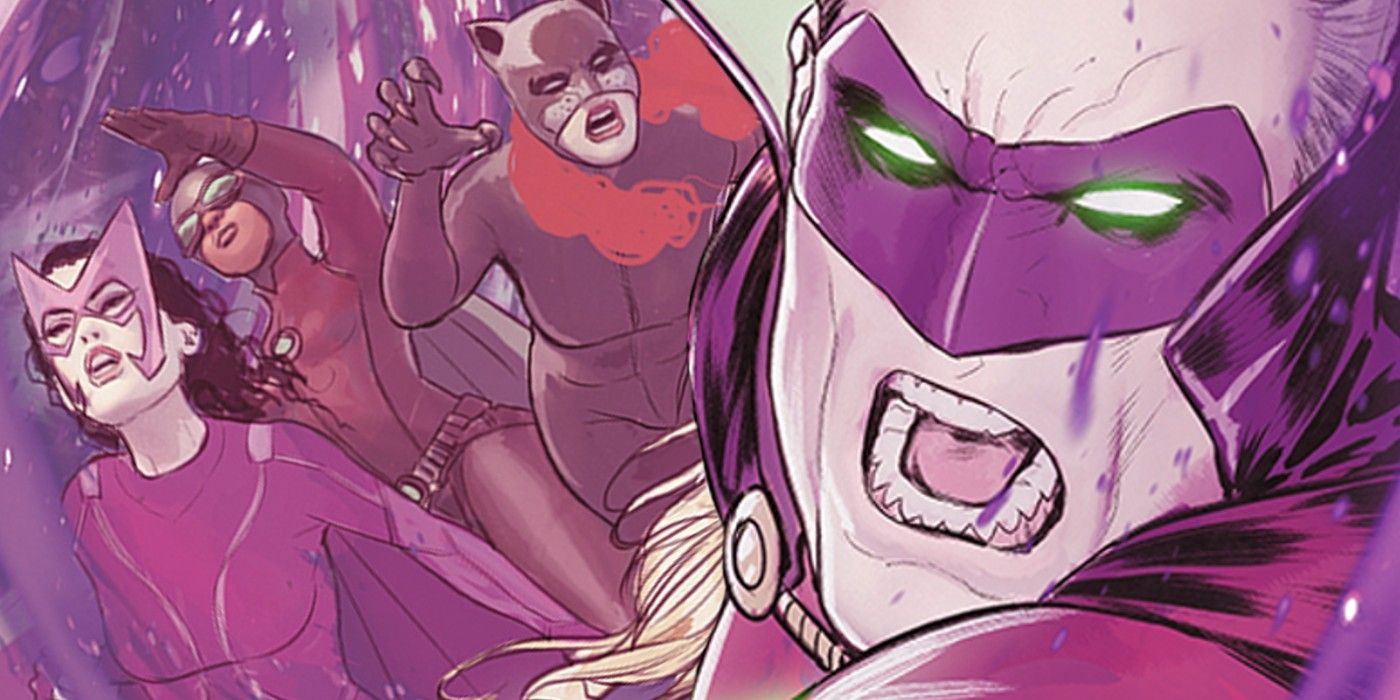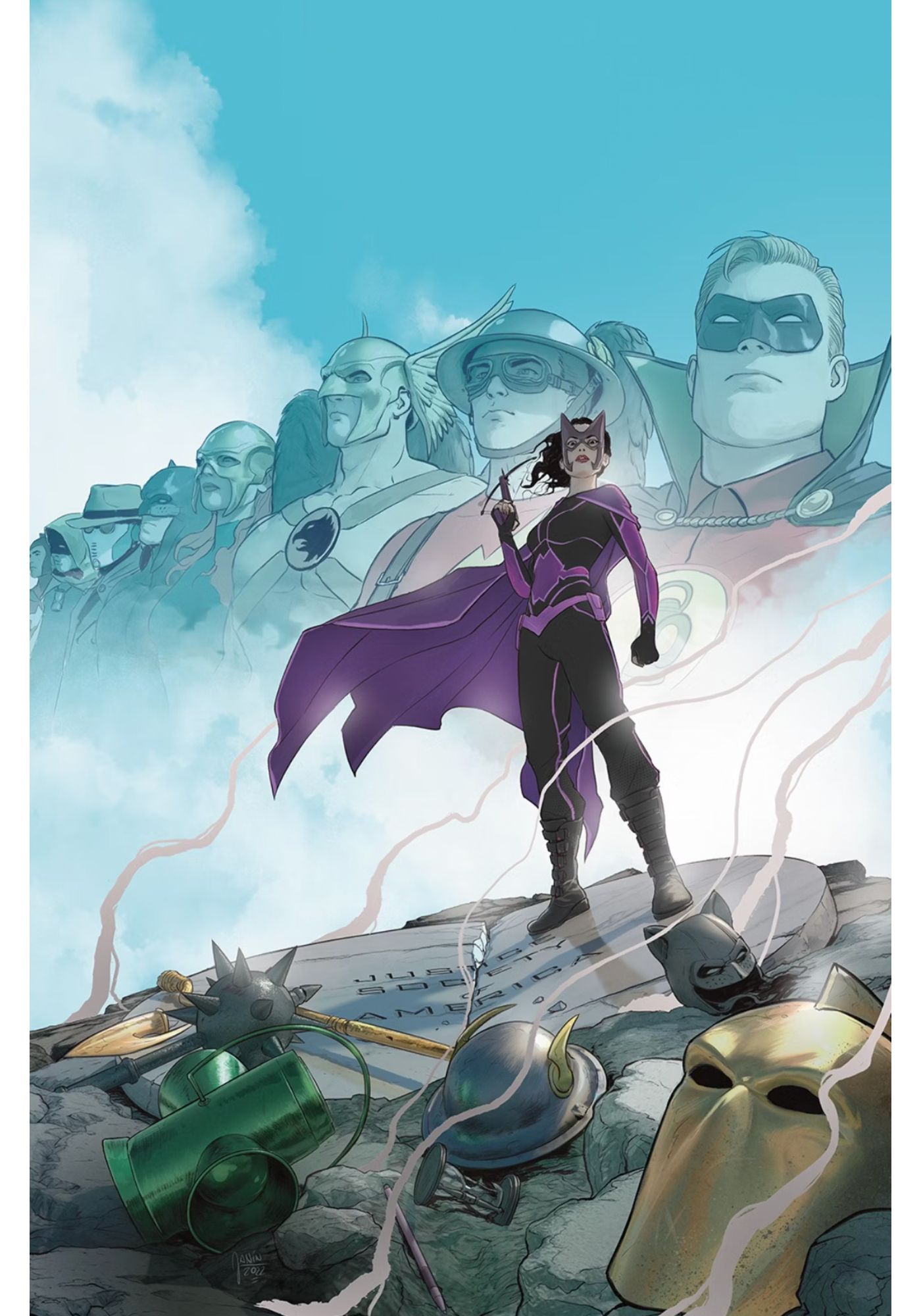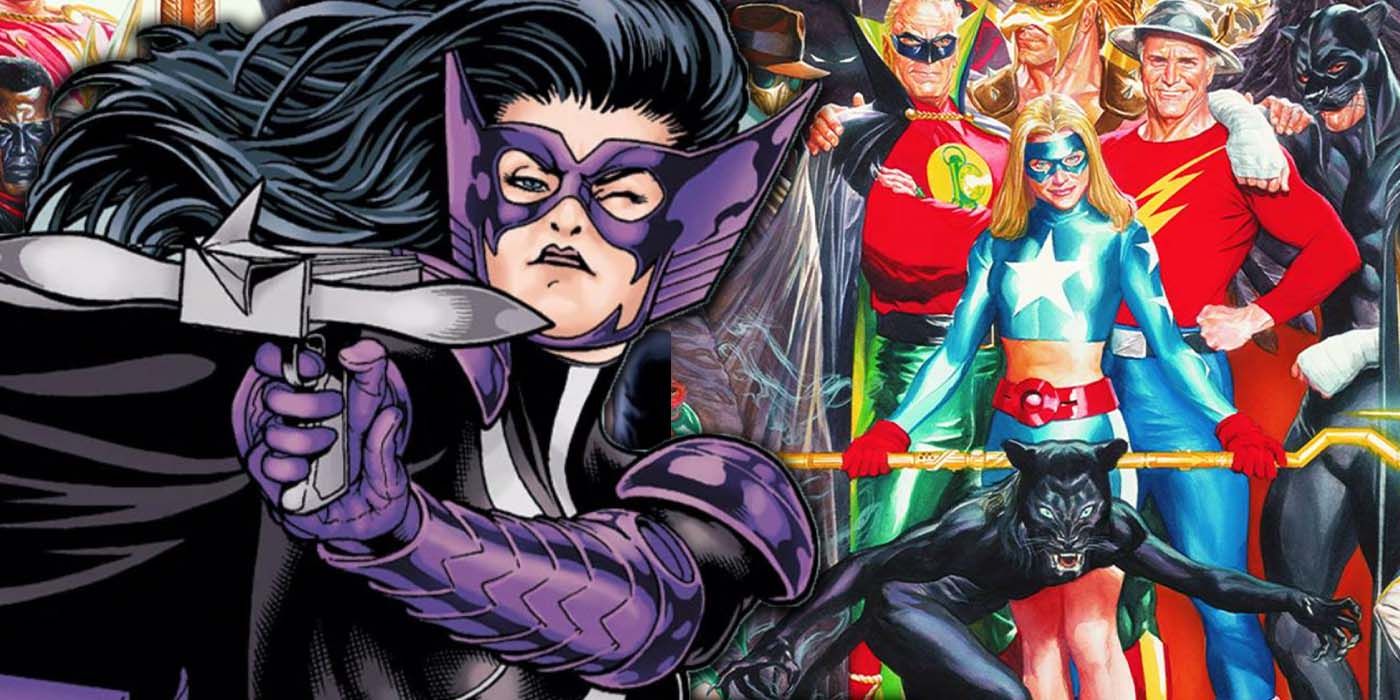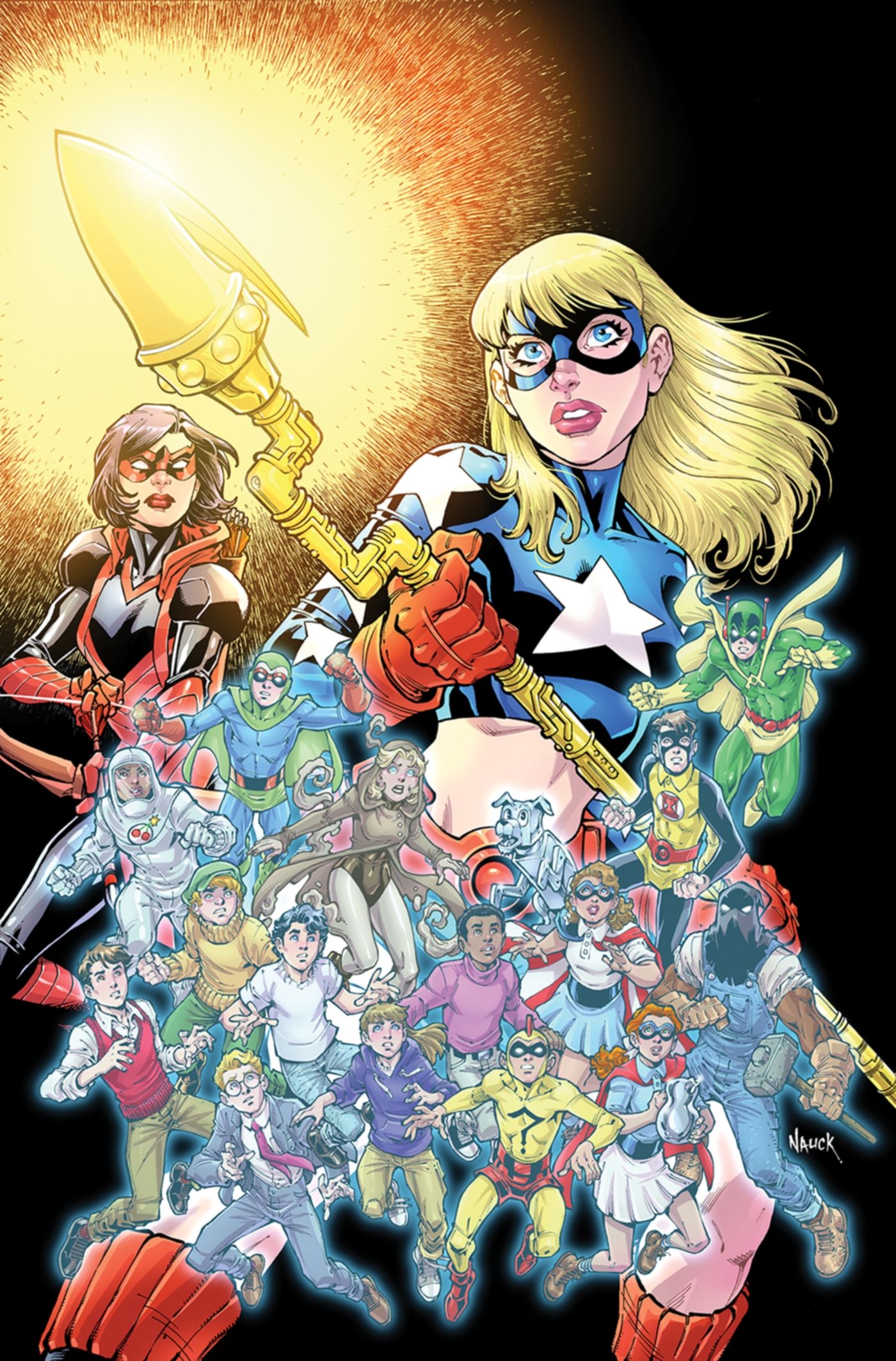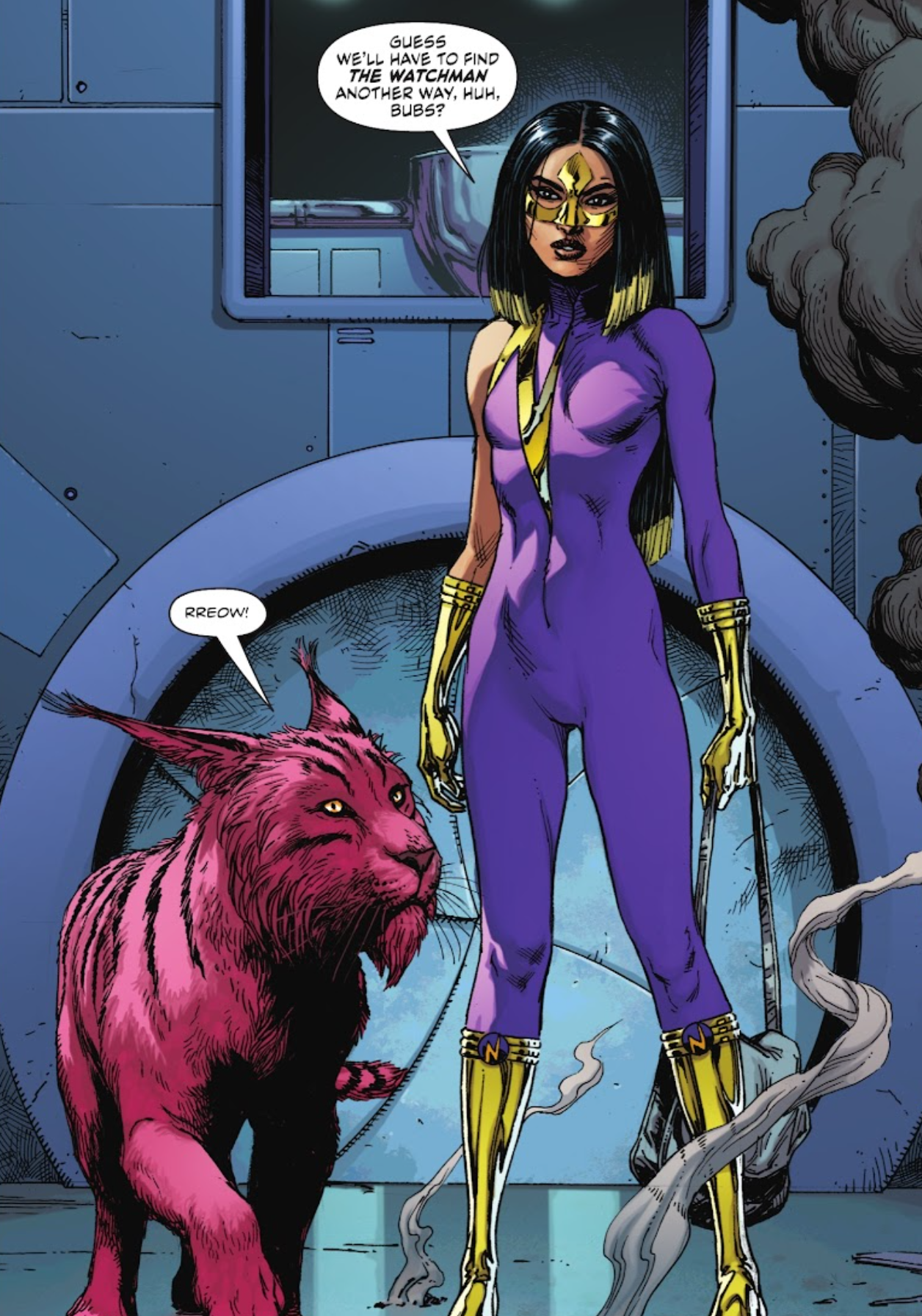Spoilers for The New Golden Age #1 by DC Comics
The Justice Society of America is returning to the pages of DC Comics in a big way, as Geoff Johns is spearheading two new stories that will shine the spotlight on different versions of the superteam from across time. In The New Golden Age and Stargirl: The Lost Children, the Justice Society of America will be pushed to the forefront of DC Comics as its deep, important history gets explored - with new and old characters taking center stage.
In Doomsday Clock, Batman: Three Jokers, and the recently concluded Flashpoint Beyond miniseries from DC Comics, Geoff Johns has worked on weaving an interconnecting story that will have huge implications for the future of the publisher's comic book universe. In The New Golden Age and Stargirl: The Lost Children, readers can see some payoff from past teases, as the Justice Society of America makes a triumphant return. We spoke to Geoff Johns about writing the JSA again, introducing new characters, and what readers can expect from the new Golden Age and Stargirl-starring series'.
What was it like to go back to the Golden Age and revisit some of these JSA characters that were lost in time? What makes them so special?
Well, I think that the magic of the new Golden Age is that loss in time, the forgotten heroes because the JSA are often forgotten in a lot of areas of DC - they just vanish. And I know that because they're so rooted in the '1940s during World War Two, some of them can feel dated. But I think that's part of their charm. And my excitement about going back is not only going back and telling stories about this generation of the JSA but also the future generation JSA and the original JSA. And introducing these new characters in the Golden Age, that existed that people just haven't read their stories about. And that has made it really fun to go back there. Because there are unexpected pathways to different stories and new characters that you don't know. And they have a history that we haven't read about yet. And it makes it all feel new, even though it's been around a long, long time.
What was it like to play with the comic book history of the JSA and reintroduce some of these characters to new readers for the first time?
I mean, I think that the Justice Society of America and Stargirl stories are designed to be people's first books. The New Golden Age #1 takes place from the point of view of a brand new, potentially a new character, a new version of Helena Wayne - so you can get into this and understand it and see the legacy that stretches across it.
But revisiting the first JSA meeting was one of my favorite things that I've gotten to do. To just take a moment where they're all getting together for the first time, and the Atom wants to ask some fun questions because he's got a Doctor Fate there, who you can see the future. So, it leads to a really fun scene, and some fun interactions and exploring those first moments where those heroes are brand new, and they're just getting to know each other, and what they might do, so it's not all about what's the mission at hand but just living like normal.
So I loved writing that scene. Because when you get in those scenes, in the case of that, I sat down to write and didn't think "oh, Al Pratt is going to be the one that's leading the conversation." But he just spoke up, he just talked, and I'm like, Oh, well, he's just he's carrying me through it. And I knew I was going to get to Dr. Fate but that Al Pratt kind of took me to him, and that's how it worked.
Where does the JSA find itself in the present day?
Well, they're in the present day right now and you'll eventually see it in the books but in the present day, right now, they exist as their team as they always have, with different generations taking on the mantle. So a lot of them you've seen on the covers, but Justice Society of America number one takes place 26 years from now, it takes place eight years after The New Golden Age #1 and it focuses on our lead character Helena Wayne and how she is carrying on her father's legacy and how she's reinterpreted what her father's legacy really has come to mean, and what she's using the Justice Society of America for in order to honor and enact what she believes is the core lesson she took from her dad. And it changes what the JSA is.
So what made Helena the perfect character to center this all around?
Because he's such a unique character with such a unique perspective on her father's legacy. And she's been a part of the JSA in the past, but that version was kind of written out of continuity. So it was fun to go back and, and say, "well we're going to put her back in, but we have an opportunity to put her back in through time travel through future through, you know, a different, slightly different version of who she was." And she's a character I was always interested in, and I never had an opportunity to write and suddenly, there was a storyline where it made perfect sense for her to be the anchor to the story.
What was it like to tackle a new generation of the JSA?
It was great fun. It took forever to do because some of the characters are brand new. So when you're doing it, just like writing those Who's Who pages and getting into that, that took longer than writing The New Golden Age, because every one of those entries is like five comic books worth of stories. Because you have to write who Salem was and where she's from and where her parents are and what she dealt with and how Dr. Fate found her and, why they partnered up and where she went, and what her powers are. Like, there's so much story in there. It's taken a long time to delve into these characters and give them these backstories, but Helena Wayne is no different. When you see the JSA she's a part of a lot of these characters in there. There are a few new ones that you've never seen, and there are certainly members that have never been on the JSA before.
What is Stargirl's role in her new miniseries, and how does it connect to the JSA?
Well, Stargirl, to me is such a great voice to young teenage heroes, particularly the JSA and the Golden Age because I think she has such a can-do attitude. She believes in people so much she sees their potential and I think she nurtures that and gives people confidence and has a lot of compassion for others. So if there are younger heroes struggling with something she's kind of the perfect character to help them find their way as the never-ending light that just is and exists. And obviously, I love the character so much, but she was the perfect headliner for a story that dealt with you know, basically every teenage Golden Age hero ever created and new ones.
Throughout your recent stories, including Doomsday Clock, Batman: Three Jokers, and Flashpoint Beyond, there has been intentional, methodical planning connecting to the Watchmen universe. How does this story culminate with that and the Thirteen seen in Flashpoint Beyond?
I'll just say that's a big that's a thread that carries and weaves in through all this stuff. And I don't want to say too much about it right now. But it's, it's a bit of a long story that's brewing in the background and ties into this in certain ways, and that's also about generations like the JSA. So there is uh you know, there's a bit of story to tell, I just don't want to spoil what it is.
The New Golden Age #1 gives you a chance to write about deep-cut DC characters you haven't explored before; which were you excited to write?
I've been really excited. The more obscure the better. You know, I loved writing the Time Masters in Flashpoint Beyond - I love writing like Bonnie and Corky Baxter and Dr. Jeff Smith and Rip Hunter They're just something about these four weird bizarre quartet of time travelers that operate kind of outside the rest of the DC Universe. I love that it's been so fun to write them. In terms of the JSA and the Golden Age, all of these characters, there's some are some really obscure Golden Age characters that popped up in the Lost Children that I didn't realize how much fun I'd have with them. One of my favorite things to write was the backstory for Ladybug with Red Bee. Because Red Bee has no backstory. There's a lot of story to him. And so to be able to build so much story to that was super fun through a blue page of a psychic character that we suddenly find out existed.
What do you hope readers get from the new stories?
Honestly, I just hope they really enjoy the comic and that it feels like a classic DC story that carries across the whole universe and the history of it. And they're intrigued and connected to Helena Wayne and they want to follow her adventures and explore more of the Golden Age. That's all its for. I want to share the love I have for these characters and the JSA with everybody else. And hopefully, people who love the JSA will enjoy reading the stories of their favorite characters again, they'll meet some new favorite characters, and I hope people who have never read Justice Society of America, give the books a shot. They certainly are in the public eye a lot more than they've ever been between Stargirl and Black Adam. So my hope is that people give the characters a chance that maybe they hadn't before.
Thanks so much to Geoff Johns for taking the time to talk to us about the upcoming projects. Readers can see the Justice Society of America return in The New Golden Age #1 by Johns, Steve Lieber, Jerry Ordway, and Diego Olortegui, which is in comic book stores now. Stargirl: The Lost Children by Johns and Todd Nauck will be released on November 15th.

